Discover 10 hidden attractions, cool sights, and unusual things to do in Selçuk (Turkey). Don't miss out on these must-see attractions: House of the Virgin Mary, Temple of Artemis, and İsa Bey Camii. Also, be sure to include Basilica of St. John in your itinerary.
Below, you can find the list of the most amazing places you should visit in Selçuk (Izmir).
Table of Contents
House of the Virgin Mary
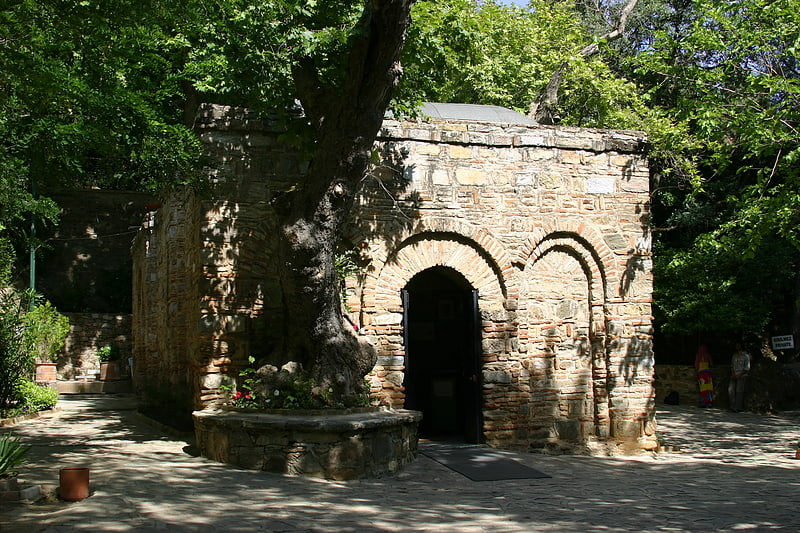
Also known as: Meryem Ana Evi
Site of former home of the Virgin Mary. The House of the Virgin Mary is a Catholic shrine located on Mt. Koressos in the vicinity of Ephesus, 7 kilometres from Selçuk in Turkey.
The house was discovered in the 19th century by following the descriptions in the reported visions of Blessed Anne Catherine Emmerich (1774–1824), a Roman Catholic nun and visionary, which were published as a book by Clemens Brentano after her death. While the Catholic Church has never pronounced in favour or against the authenticity of the house, the site has nevertheless received a steady flow of pilgrimage since its discovery. Anne Catherine Emmerich was beatified by Pope John Paul II on October 3, 2004.
Catholic pilgrims visit the house based on the belief that Mary, the mother of Jesus, was taken to this stone house by Saint John and lived there for the remainder of her earthly life.
The shrine has merited several papal Apostolic Blessings and visits from several popes including Paul VI, John Paul II, and Benedict XVI.[1]
Address: Acarlar Mahallesi, Meryem Ana Yolu, 35920 Selçuk
Temple of Artemis

Also known as: Artemis Tapınağı
Archaeological ruins of a Greek temple. The Temple of Artemis or Artemision, also known as the Temple of Diana, was a Greek temple dedicated to an ancient, local form of the goddess Artemis. It was located in Ephesus. By 401 AD it had been ruined or destroyed. Only foundations and fragments of the last temple remain at the site.
The earliest version of the temple antedated the Ionic immigration by many years. Callimachus, in his Hymn to Artemis, attributed it to the Amazons. In the 7th century BC, it was destroyed by a flood. Its reconstruction, in more grandiose form, began around 550 BC, under Chersiphron, the Cretan architect, and his son Metagenes. The project was funded by Croesus of Lydia, and took 10 years to complete. This version of the temple was destroyed in 356 BC by Herostratus in an act of arson.
The next, greatest, and last form of the temple, funded by the Ephesians themselves, is described in Antipater of Sidon's list of the world's Seven Wonders:
I have set eyes on the wall of lofty Babylon on which is a road for chariots, and the statue of Zeus by the Alpheus, and the hanging gardens, and the colossus of the Sun, and the huge labour of the high pyramids, and the vast tomb of Mausolus; but when I saw the house of Artemis that mounted to the clouds, those other marvels lost their brilliancy, and I said, "Lo, apart from Olympus, the Sun never looked on aught so grand".[2]
İsa Bey Camii
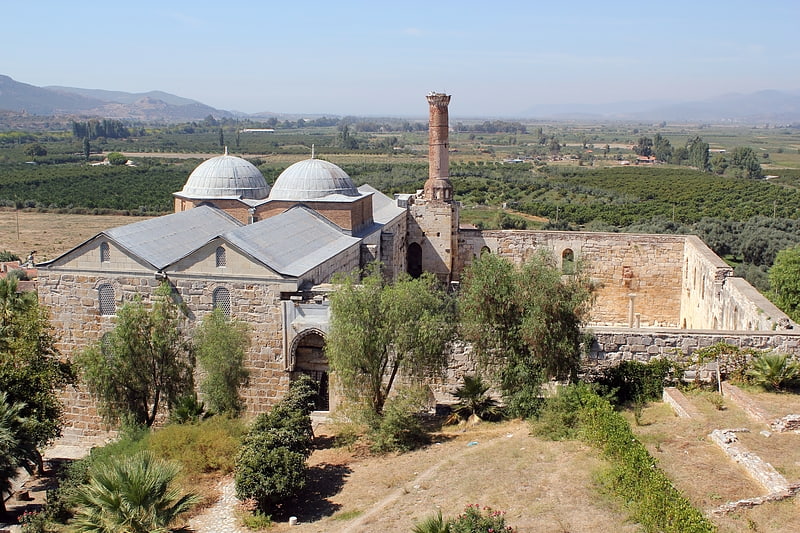
14th-century mosque. The İsa Bey Mosque, constructed in 1374–75, is one of the oldest and most impressive works of architectural art remaining from the Anatolian beyliks. The mosque is situated on the outskirts of the Ayasluğ Hills at Selçuk, İzmir.[3]
Address: İsa Bey Mh. 2040. Sk., Selçuk
Basilica of St. John
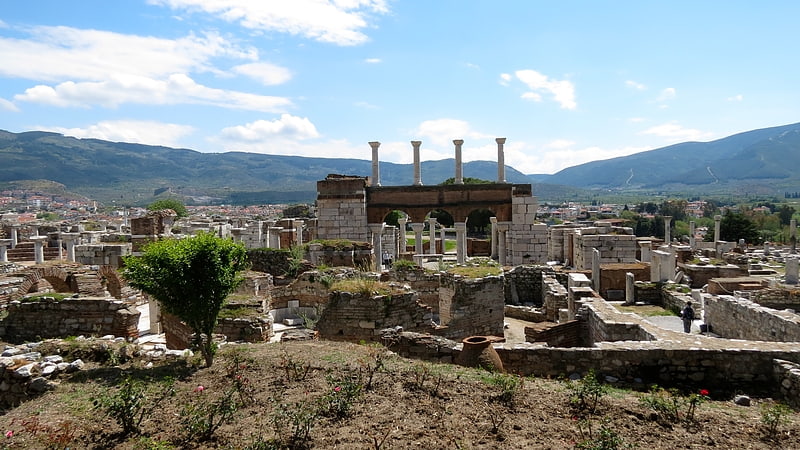
Church in Turkey. The Basilica of St. John was a basilica in Ephesus. It was constructed by Justinian I in the 6th century. It stands over the believed burial site of John the Apostle. It was modeled after the now lost Church of the Holy Apostles in Constantinople.
The basilica is on the slopes of Ayasuluk Hill just below the fortress near the center of Selçuk, İzmir Province, Turkey and about 3.5 km from Ephesus.[4]
Address: Entrance off St. Jean Sok., 35920 Selcuk
Çamlık Railway Museum
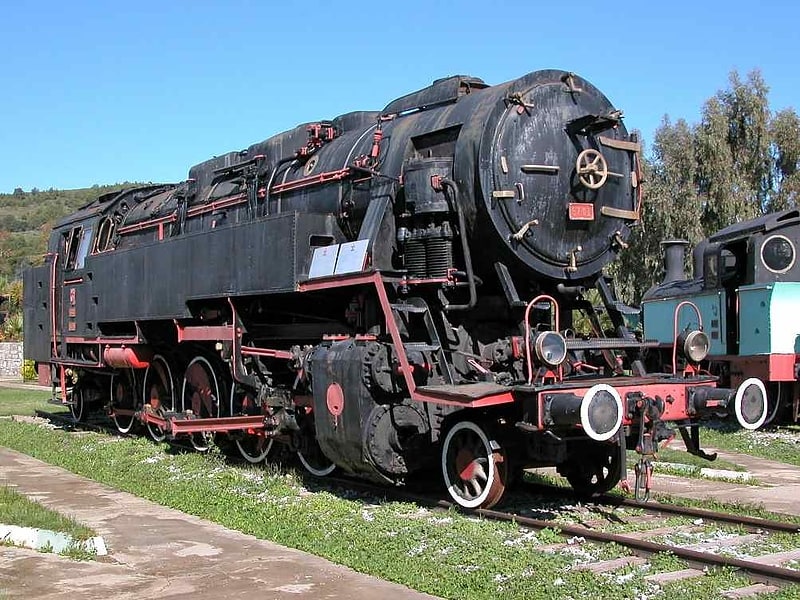
Also known as: Çamlık Buharlı Lokomotif Müzesi
Museum. The Çamlık Railway Museum, a.k.a. Çamlık Steam Locomotive Museum, is an outdoor railway museum at Çamlık village of Selçuk district in Izmir Province, Turkey. It is the largest railway museum in Turkey and contains one of the largest steam locomotive collections in Europe.[5]
Address: Çamlık Mah., 35920 Selçuk
Ephesus Archaeological Museum

Also known as: Efes Müzesi
Museum in Selçuk, Turkey. The Ephesus Archaeological Museum is an archaeological museum in Selçuk near the Ancient Greek city of İzmir, Turkey. It houses finds from the nearby Ephesus excavation site. Its best-known exhibit is the ancient statue of the Greek Goddess Artemis retrieved from the temple of the goddess in Ephesus.
There are approximately 64 thousand pieces exhibited in the Ephesus Museum.
The other museum with a great number of Ephesus artifacts is the Ephesus Museum in Vienna.
The museum closed at the end of 2012, and reopened in November 2014 after extensive renovations.[6]
Address: Atatürk Mah. Uğur Mumcu Sevgi Yolu, 35920 Selçuk
Celsus Library
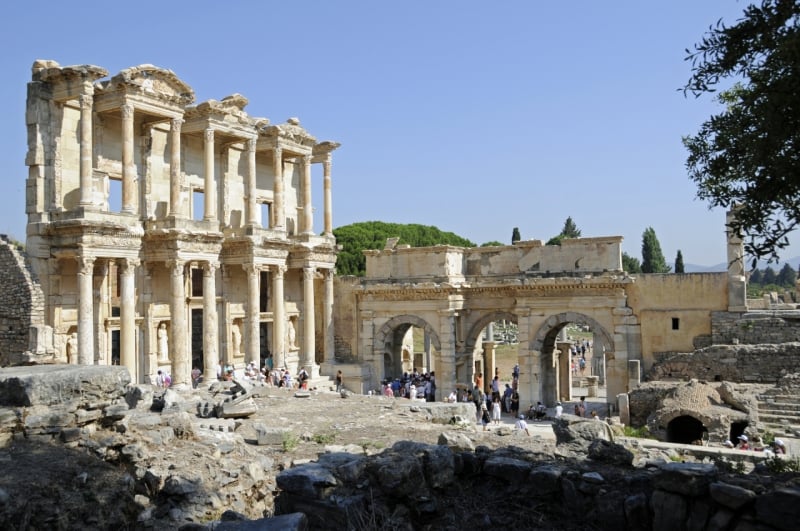
Also known as: Celsus Kütüphanesi
Historical landmark in Turkey. The Library of Celsus is an ancient Roman building in Ephesus, Anatolia, now part of Selçuk, Turkey. The building was commissioned in the 110s A.D. by a consul, Gaius Julius Aquila, as a funerary monument for his father, former proconsul of Asia Tiberius Julius Celsus Polemaeanus, and completed during the reign of Hadrian, sometime after Aquila's death. The library is considered an architectural marvel, and is one of the only remaining examples of a library from the Roman Empire. The Library of Celsus was the third-largest library in the Roman world behind only Alexandria and Pergamum, believed to have held around twelve thousand scrolls. Celsus is buried in a crypt beneath the library in a decorated marble sarcophagus. The interior measured roughly 180 square metres.
The interior of the library and its contents were destroyed in a fire that resulted either from an earthquake or a Gothic invasion in 262 C.E. and the façade by an earthquake in the tenth or eleventh century. It lay in ruins for centuries until the façade was re-erected by archaeologists between 1970 and 1978.[7]
Address: Efes Selcuk Merkez, Selcuk, Selçuk
Prytaneion

Ruins
Laren Safari Park

Nature and wildlife tours, Safaris, Tours, Outdoor activities, Park, Relax in park
Address: Kusadasi selcuk yolu, 35920 Selçuk
Ephesus
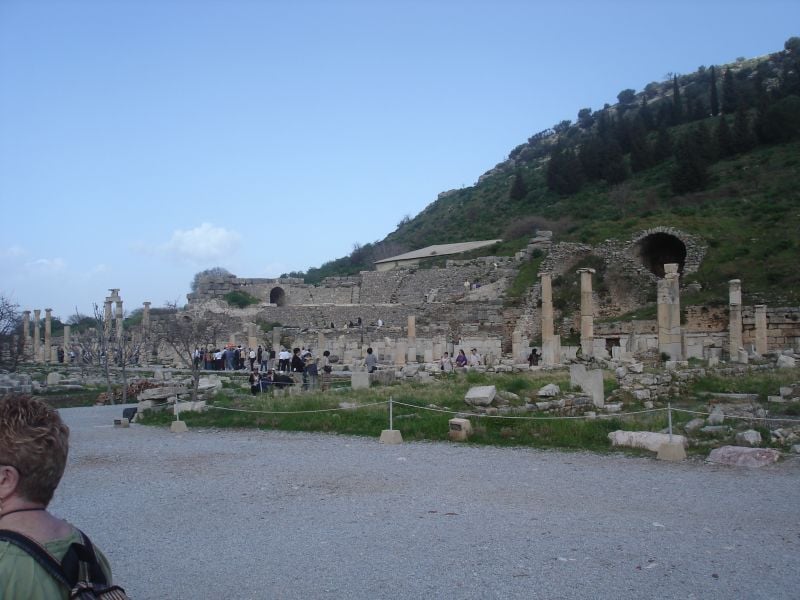
Ruins
Address: Efes Harabeleri, 35920 Izmir Province, Selçuk